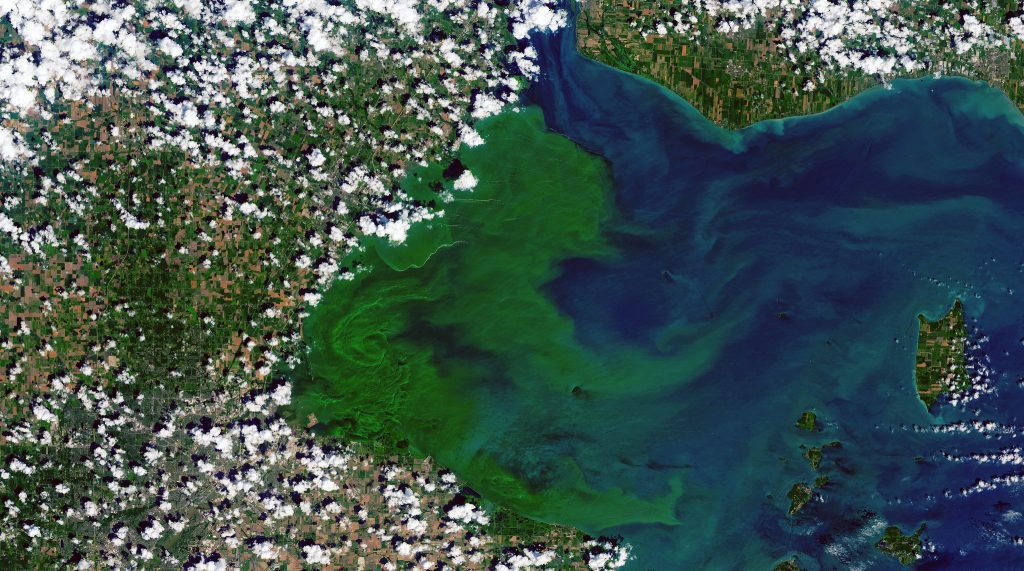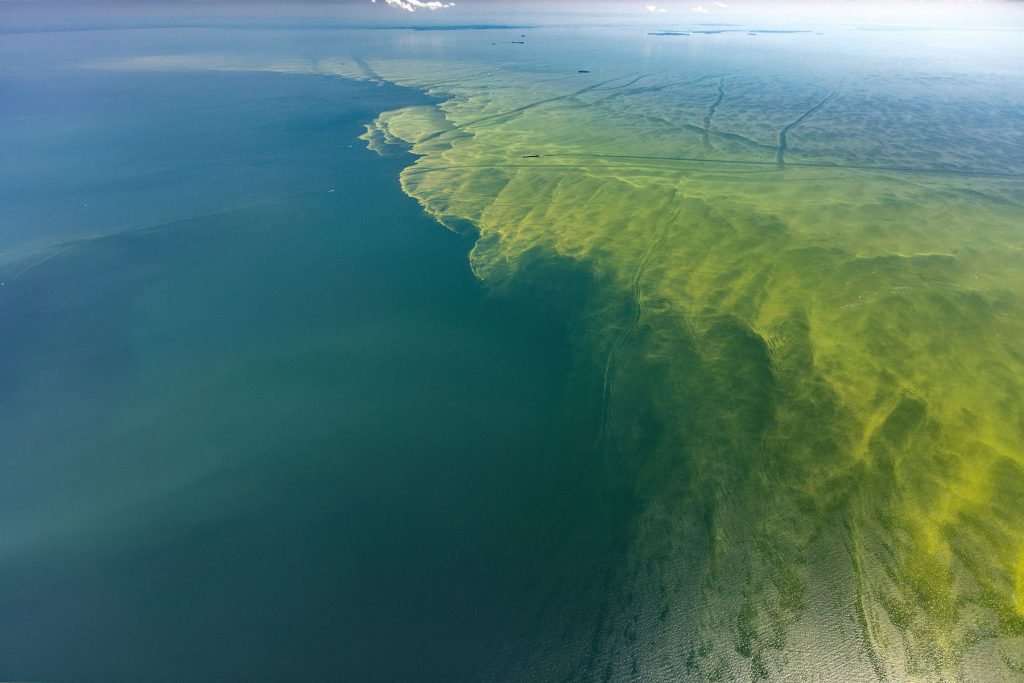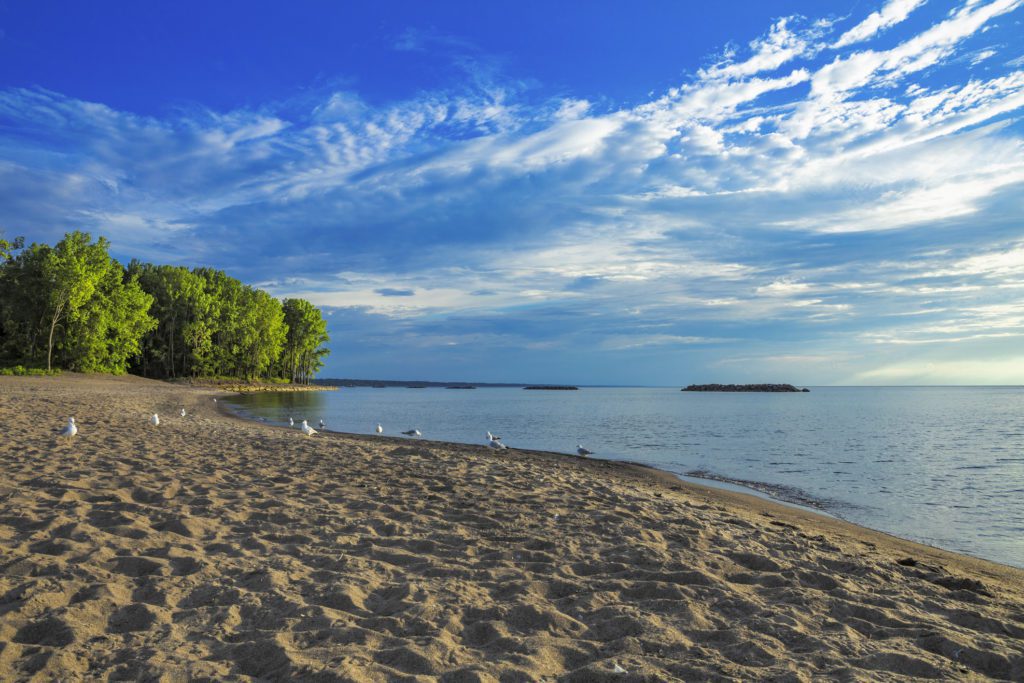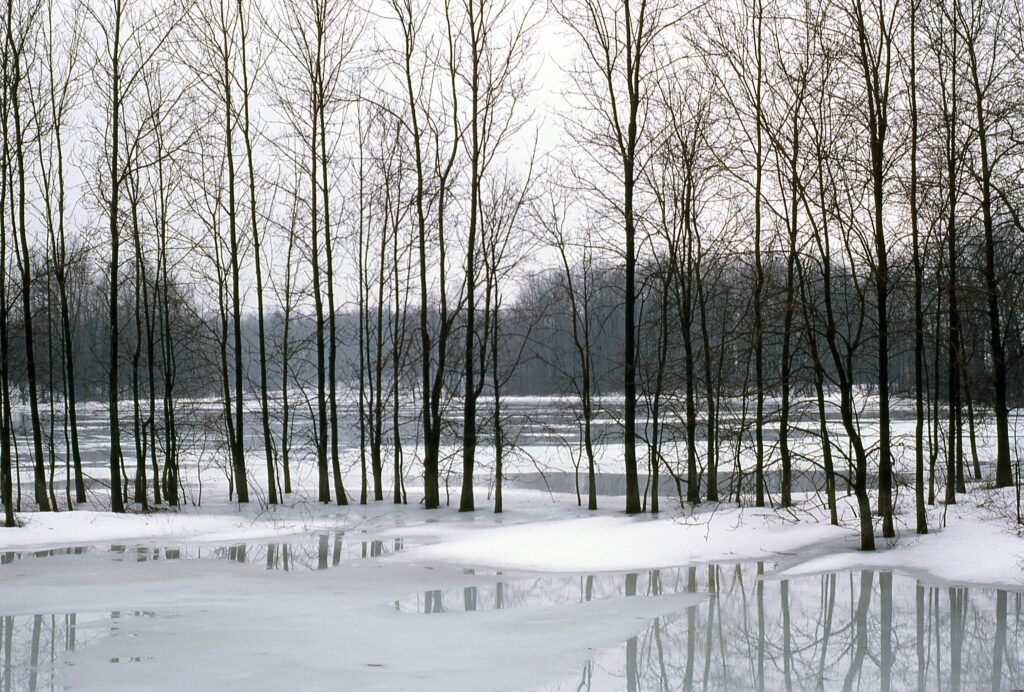Along with heatwaves, ice cream, and dips in the lake or pool, another summer tradition took place today: the Lake Erie algae bloom forecast. Every year, the National Oceanic and Atmospheric Association (NOAA) use their monitoring and models to predict how severe the Lake Erie algae bloom will be in the summer and through the fall.
Another year, another bloom

In recent years, the forecasts have begun to feel like Groundhog Day, the movie. The NOAA forecasts have become less a question of “will there be a bloom?” to “how bad will it be this year?”. Each year, we see more phosphorus entering waterways than Lake Erie can handle. We also see significant rainfalls increase the amount of runoff from agricultural lands. And NOAA always predicts that an algae bloom will soon engulf the Western basin to varying degrees and hold the potential to be very toxic.
This year was no different. Today, NOAA predicted that Lake Erie will host a bloom this year with a 4.5 severity level, which is considered a moderate bloom. This spring, thousands of metric tonnes of phosphorus entered the Maumee River in Ohio. This provided the fuel that a large algae bloom needs to grow and expand. Luckily, this spring had less rain than in previous years. Less rain means less water flowing through the rivers entering Lake Erie, and less phosphorus going with it. This good fortune with weather is helping to keep the bloom at a less severe level than in 2019.
Bad blooms come in all shapes and sizes
Even a bloom predicted at a 4.5 severity is cause for serious concern. Blooms don’t need to be off the scales to cause serious damage. In 2014, for example, the bloom was predicted at a level 6 severity. Later in the summer, the bloom grew and drifted into water intake zones, leaving residents of Toledo, Ohio and Pelee Island, Ontario without drinking water for several days.
Algae blooms on Lake Erie can impact our drinking water intakes, making treating drinking water more expensive and difficult. The blooms impact Lake Erie’s ecosystem by suffocating fish and disrupting the habitat needs of the countless species that rely on clean water. Lake Erie is an ecological treasure and the source of drinking water for 11 million people. It needs to be protected from these toxic algae blooms.
Governments aren’t doing enough

Photo Credit: Aerial Associates Photography, Inc. by Zachary Haslick
Even with all of these impacts, governments are not doing enough to save Lake Erie. In February 2018, the federal and Ontario governments finalized their joint action plan for reducing Lake Erie phosphorus by 40 per cent. At the same time, they committed to sharing with the public, no later than February 2019, a detailed work plan. The plan would provide accountability to how the reductions will be made and how each action in the plan gets us closer to a clean Lake Erie. However, as of July 2020, the public has seen no such plan.
Saving Lake Erie is more important than ever
Today’s forecast shows us that Lake Erie’s health is not improving, and the lake cannot afford these delays by the government. Both the provincial and federal governments need to follow through on the actions they’ve committed to and make ambitious plans to achieve phosphorus reduction targets. Saving Lake Erie is especially important in a post-COVID-19 world. That’s because the cost of doing nothing could seriously damage our already wounded economy.
A study estimates that if action is not taken, Lake Erie algae blooms could cost the Canadian economy $5.3 billion by 2050. On the other hand, however, green jobs can be created that build and restore wetlands, implement best practices in agriculture, or plant trees and vegetation buffer strips next to waterways to prevent runoff. These investments in natural infrastructure can help prevent algae on Lake Erie and help with a green economic recovery.
Take action today and tell the federal and provincial governments that Lake Erie needs action now.










